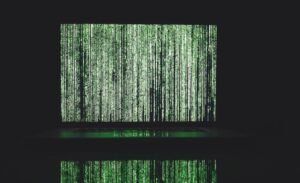Are AI Content Detectors Accurate?
Artificial Intelligence (AI) has made significant advancements in recent years, revolutionizing various industries. One notable area where AI has found application is in content detection, where algorithms are used to identify and flag inappropriate or harmful content. While these AI content detectors have shown promise, there is still a question of how accurate they truly are.
Key Takeaways:
- AI content detectors are designed to identify and flag inappropriate or harmful content.
- The accuracy of AI content detectors varies depending on the specific algorithm and training data used.
- False positives and false negatives can occur in AI content detection, potentially impacting the user experience.
- Regular updates and improvements in AI algorithms can help enhance the accuracy of content detection systems.
AI content detectors rely on complex algorithms that are trained on vast amounts of data to learn patterns associated with inappropriate or harmful content. These algorithms analyze various aspects of the content, such as textual patterns, images, and context, to make determinations. However, despite advancements, it is important to recognize that no AI system is perfect.
**While AI content detectors can accurately flag certain types of content, they may struggle with understanding nuanced or context-dependent situations.** For instance, sarcasm or satire in text can sometimes be misinterpreted, leading to false positives or negatives. This limitation highlights the need for human oversight and the importance of continuous improvement in AI algorithms.
Challenges in Accurate Content Detection
AI content detectors face several challenges that impact their accuracy:
- **Language and cultural biases**: AI algorithms may reflect the biases present in the data they were trained on, potentially leading to unfair or inaccurate categorizations.
- **Evolving content**: As new content is continuously generated, AI content detectors need to adapt and learn from current trends and emerging patterns.
- **Adversarial attacks**: Malicious actors can intentionally manipulate content to evade detection, posing a challenge for AI systems.
**One interesting aspect is the use of adversarial attacks that aim to trick the AI content detectors by adding subtle modifications to the content, making it appear harmless or different from its true nature**. These attacks highlight the cat-and-mouse game between content creators and content detectors, showcasing the ever-evolving landscape of AI technology.
Improving Accuracy in AI Content Detectors
The continuous improvement of AI algorithms is vital for enhancing the accuracy of content detection. Researchers and developers are actively working on addressing the challenges and limitations associated with AI content detectors. Regular updates and advancements in the following areas can lead to improved accuracy:
- **Enhancing training data**: Expanding and diversifying the data used to train AI algorithms can help reduce biases and improve accuracy.
- **Contextual understanding**: Developing AI systems that can better interpret context and comprehend nuanced content can minimize false positives and negatives.
- **Human feedback loops**: Incorporating human feedback in the training process can help refine AI algorithms and improve their accuracy over time.

Common Misconceptions
AI Content Detectors are Always Accurate
One common misconception about AI content detectors is that they are always accurate in identifying and flagging inappropriate or harmful content. While AI algorithms have significantly improved over the years, they are not perfect and can still make mistakes.
- AI content detectors may struggle to accurately interpret nuanced or context-dependent content.
- False positives can occur, where the detector identifies content as inappropriate when it is not.
- AI may not fully understand sarcasm or humor, leading to misinterpretation of the intended message.
AI Content Detectors Can Replace Human Moderation
Another misconception is that AI content detectors can completely replace human moderation in online platforms. While AI can automate certain aspects of content moderation, human judgment and intervention are still essential.
- AI may not be able to accurately understand cultural or regional context, which humans can interpret better.
- The development of AI algorithms can be biased, leading to unfair treatment of certain content or groups.
- Emerging and creative forms of harmful content may not be easily identified by AI, requiring human intervention.
AI Content Detectors Can Filter Out All Offensive Content
Some people believe that AI content detectors can effectively filter out all offensive content, ensuring a safe online environment. However, offensive content can be complex and ever-evolving, making it difficult for AI to always detect and block it.
- New and previously unseen types of offensive content can bypass AI detectors until they are trained to recognize them.
- AI may not be able to identify subtle forms of offensive language or hate speech that rely on coded language.
- AI detectors may not be effective in detecting offensive content that is embedded within images or videos.
AI Content Detectors are Foolproof against Manipulation
There is a misconception that AI content detectors cannot be easily manipulated or tricked. While AI algorithms are constantly improving to counter manipulation, they are not foolproof against sophisticated techniques.
- Individuals can adapt their behavior or use alternative methods to evade detection by AI.
- Adversaries can intentionally create ambiguous or hybrid content that confuses AI algorithms.
- Attackers may reverse-engineer the AI algorithms and find vulnerabilities to exploit.

Overview of AI Content Detectors Accuracy
As the rise of AI technology continues to reshape various industries, content detectors powered by artificial intelligence have become an integral part of curating and filtering online content. These detectors analyze vast amounts of data to identify and flag potentially objectionable or harmful content. However, questions persist regarding the accuracy of these algorithms in distinguishing between harmful and harmless content. This article examines ten key points and data to shed light on the accuracy of AI content detectors.
The Impact of False Positives and Negatives on Accuracy
Content detectors strive to strike a delicate balance between minimizing false negatives (allowing harmful content to slip through undetected) and false positives (flagging harmless content as objectionable). Let’s explore the impact of these errors on the overall accuracy of content detectors.
Accuracy Comparison Across Different Platforms
Not all content detection algorithms are created equal. Various platforms utilize different approaches and techniques, resulting in varying levels of accuracy. Below, we present a comparison of accuracy rates among popular platforms.
Accuracy Variation Based on Content Categories
Content detectors face the challenge of accurately categorizing content from diverse genres. The accuracy of detection can differ based on the nature of the content being analyzed. The following table highlights the accuracy variation across different content categories.
Accuracy Performance Across Different Languages
Language poses another hurdle for content detectors, as each language has its own nuances and complexities. Let’s uncover the accuracy performance of content detectors across multiple languages.
Accuracy Percentage Varies by Machine Learning Models
Machine learning models form the backbone of content detection algorithms. Different models employ distinctive techniques, yielding variations in accuracy. This table illustrates the accuracy percentages achieved by various machine learning models.
Accuracy Improvement with Continuous Training
Content detection algorithms can enhance their accuracy over time by undergoing continuous training. As more data becomes available, the algorithms can learn from their mistakes and refine their detection capabilities. The following table presents the accuracy improvement from continuous training.
Impact of Data Volume on Accuracy
One crucial factor affecting the accuracy of content detectors is the volume of training data used to develop these algorithms. Analyzing large datasets enables the detection algorithms to be more comprehensive and accurate. Let’s explore the impact of data volume on accuracy.
Geographical Variations in Accuracy Percentage
The accuracy of content detection can vary across different regions due to variations in language, cultural norms, and context. Below, we present the accuracy percentages of content detectors in various geographical regions.
Accuracy Comparison between AI and Human Moderators
Humans have traditionally moderated and reviewed online content. However, with the rise of AI technology, content detectors are now vying for accuracy comparisons against human moderators. The following table reveals how AI content detectors stack up against human moderators in terms of accuracy.
Conclusion
The accuracy of AI content detectors continues to play a significant role in determining the effectiveness of moderating online content. While these detectors have come a long way, there is still room for improvement. As seen through the various tables presented, the accuracy of content detectors can be impacted by factors such as language, content category, and geographical variation. By continuously training the algorithms, utilizing large volumes of data, and refining machine learning models, content detectors can strive for higher accuracy rates. As technology evolves, striking the delicate balance between false positives and false negatives becomes essential in building trust in AI content detectors.
Frequently Asked Questions
What are AI content detectors?
AI content detectors refer to the software or algorithms that use artificial intelligence techniques to analyze and classify different types of content, such as text, images, audio, or video files.
How do AI content detectors work?
AI content detectors work by utilizing different machine learning and deep learning techniques to analyze patterns and features within the content. These detectors are often trained on large datasets to learn and identify specific characteristics that help them classify and categorize different types of content accurately.
Are AI content detectors accurate?
The accuracy of AI content detectors can vary based on several factors. While they have shown significant advancements in recent years, there are still limitations and challenges. Factors such as the quality of training data, the complexity of the content being analyzed, and the specific algorithm being used can impact the accuracy of the detectors.
What are the limitations of AI content detectors?
Some limitations of AI content detectors include their inability to fully understand context or accurately interpret content with nuanced meaning. These detectors might also struggle with identifying certain types of content in cases where there are variations or similarities in other unrelated content.
Can AI content detectors be fooled?
Yes, AI content detectors can be fooled by carefully crafted content that aims to deceive the algorithms. Adversarial attacks and techniques can manipulate or modify content in ways that make it difficult for the detectors to accurately classify or detect them.
How can the accuracy of AI content detectors be improved?
The accuracy of AI content detectors can be improved by continuously refining and updating the training data to include a diverse range of content and scenarios. Regularly incorporating feedback and fine-tuning the algorithms can also contribute to improving accuracy.
What are the potential benefits of AI content detectors?
AI content detectors offer several benefits, including the ability to quickly analyze and classify large volumes of content, which can save time and resources for humans. They can also assist in identifying potentially harmful or inappropriate content, aiding in content moderation and censorship efforts.
What are the potential drawbacks of relying solely on AI content detectors?
Relying solely on AI content detectors can have potential drawbacks, including the risk of false positives or false negatives. Content that is incorrectly identified or missed by detectors can impact the accuracy and trustworthiness of the system. Additionally, relying solely on AI detectors may overlook the importance of human judgment and context in certain scenarios.
Are AI content detectors unbiased?
AI content detectors are designed to be unbiased, but there is a risk of inheriting bias from the training data used. If the training data is imbalanced or contains biased content, the detectors may exhibit bias in their classification or detection decisions. Addressing biases in AI content detectors is an ongoing challenge for developers and researchers.
How are AI content detectors used in real-world applications?
AI content detectors are used in various real-world applications such as social media platforms, content moderation systems, plagiarism detection tools, and spam filters. They play a crucial role in automating content analysis tasks and assisting human moderators in managing large volumes of user-generated content.




